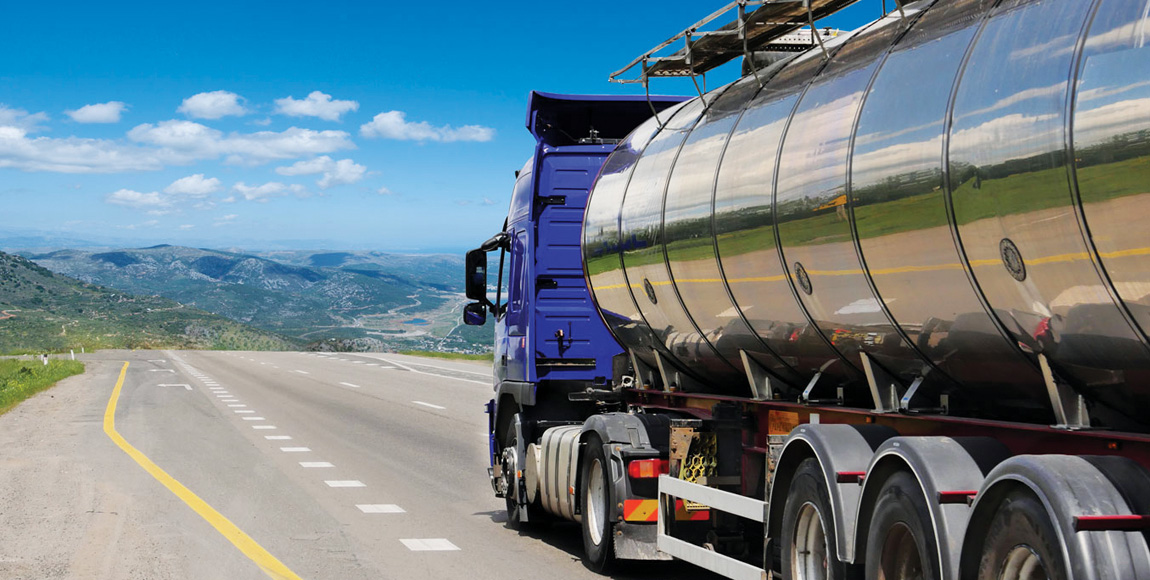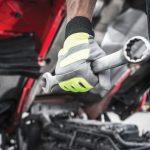Keeping a strict checklist

While all transport legislation is important, transport operators working with petrochemicals and dangerous goods need to be extra vigilant. MARISKA MORRIS takes a closer look at some of the requirements
Transport operators dealing with dangerous or hazardous goods need to ensure strict compliance with relevant regulations. This includes having the correct identification papers on the vehicle, ensuring that staff are well trained and goods are secured. This can save lives while protecting communities and the environment.
The correct signage on the vehicle, for example, notifies emergency services of how to respond when an accident occurs. If a vehicle carrying water-sensitive gas (such as hydrogen) is in an accident, firefighters may not use water to extinguish any fires. A sign notifying the firefighters of the gas content should therefore be clearly displayed.
If radioactive material is being transported, emergency services require specific protective equipment to approach the vehicle, while the driver would need to receive specific medication and treatment immediately.
An informed driver will be able to better assist emergency services or contact relevant authorities. Properly securing the load can help prevent spills or leaks should the vehicle be involved in an accident.
The National Road Traffic Act 93 of 1996 and the South African National Standard 10228 outline the requirements for transporting dangerous goods. For those transport operators considering expanding their operations to include the transportation of dangerous goods, it might be useful to consult with experts in the field.
Some of the basic requirements are straightforward (see FOCUS Issue 2, 2018), but others – such as the packaging and signage on the vehicle – can be more complicated. For example, some goods are considered hazardous only at specific quantities.
As global transport and logistics company DSV points out: “[Some goods that are] not ‘dangerous’ in a low quantity can suddenly become so once a certain limit is exceeded or if different packaging is used.” These goods can include lithium batteries, aerosol sprays or even perfume. Packaging and labelling also become extremely important when operating across borders.
According to DSV, a major retailer faced fines of US$ 144 000 (R2 million) when its shipping declaration for the dangerous materials in its retail-sized bottles of nail polish and sunblock was incorrect. Another fine was issued to a pharmaceutical company for undeclared alcohol in its skincare products.
 There is a universal system for classification, packaging, marking and labelling of dangerous goods set out by the United Nations. Among these are the nine classes of hazardous or dangerous goods ranging from explosive and flammable materials to toxic, infectious or radioactive materials.
There is a universal system for classification, packaging, marking and labelling of dangerous goods set out by the United Nations. Among these are the nine classes of hazardous or dangerous goods ranging from explosive and flammable materials to toxic, infectious or radioactive materials.
In addition to the national and international standards, transport operators also need to comply with rules set out by local municipalities. These might include approved routes and times at which to transport the goods or additional permits.
The City of Johannesburg, for example, requires all vehicles that transport dangerous goods to have a valid permit issued by the chief fire officer. This needs to be in the vehicle at all times and made available during an inspection. The permit may not be issued for a period longer than 12 months.
In addition, the vehicle should be equipped with a nine-kilogram, dry-chemical fire extinguisher and be physically earthed to the storage facility when goods are transferred.
DSV advises transport operators to consider appointing a safety adviser who has undergone relevant training in dangerous goods – especially if transporting dangerous goods will become a regular service.
However, even with professional advice, transport operators are discouraged from relying on summarised versions of the various legislations. As Arrive Alive points out: “Dangerous goods legislation is very voluminous and quite intricate. It will be difficult to do more than create awareness with a summarised document.”
Along with the safety adviser, transport operators should ensure all employees handling the hazardous materials are well-trained – particularly the driver, who requires a professional driving permit (PrDP) category D to be able to transport dangerous goods and substances (including liquids, solids and gases) above certain quantities.
Generally, the training for a PrDP D touches on the legal aspects such as which materials can be transported together and the signs that should be displayed. In order to take this course, a driver needs to be older than 25 years, have a valid driving licence and a valid PrDP. The PrDP D certificate should be renewed every year and the driver should undergo retraining every two years.
This specific training is essential as the driver will be the first responder in the case of an accident (in which the driver is unharmed and conscious) and takes primary responsibility for the packaging and load securing of dangerous goods.
In addition to the PrDP D and material-specific training (such as detecting and managing a dangerous goods spill), drivers can benefit from roll-over prevention training. When a vehicle transporting dangerous goods rolls over, it poses the greatest risk to other road users and the environment.
If a roll-over or accident does occur, Arrive Alive suggests a few guidelines for other road users to safely pass the dangerous goods vehicle.
First, they are discouraged from approaching or remaining in the vicinity of the vehicle. If untrained and without the correct protective equipment, road users are encouraged to evacuate the area, to avoid using a cellphone until at a safe distance and to inform the relevant authorities.
When passing the accident, motorists should also remain in their vehicles, keep all windows closed and avoid inhaling fumes. Smoking, lighting a cigarette or disposing of flammable goods is also strongly discouraged.
Published by
Mariska Morris
focusmagsa




